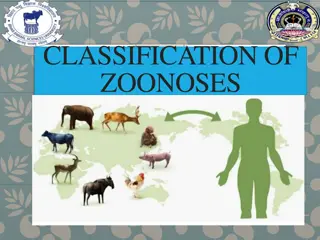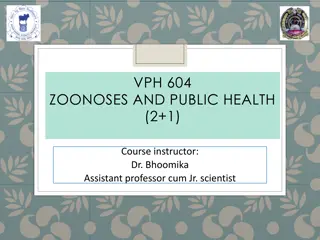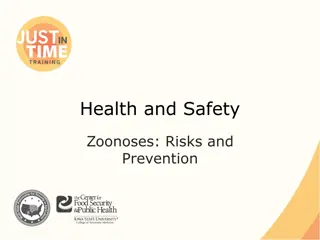Understanding the Classification of Zoonoses
Zoonoses, diseases that can be transmitted from animals to humans, are classified based on etiological agents, transmission cycle, and reservoir hosts. Etiological agents include bacteria, viruses, rickettsial, chlamydial, mycotic, and parasitic organisms. The transmission cycle categorizes zoonoses
2 views • 18 slides
Understanding the Classification of Zoonoses
Zoonoses can be categorized based on etiological agents, transmission cycles, and reservoir hosts. Etiological agents include bacteria, viruses, rickettsia, fungi, and parasites. Transmission cycles vary between direct zoonoses, cyclozoonoses, and metazoonoses. Understanding these classifications is
0 views • 18 slides
Understanding Zoonoses in Public Health: Classification and Transmission Cycles
Zoonoses, diseases transmitted from animals to humans, are classified based on etiological agents, transmission cycles, and reservoir hosts. The classification includes bacterial, viral, rickettsial, chlamydial, mycotic, and parasitic zoonoses. Transmission cycles are categorized as direct, cyclozoo
0 views • 19 slides
Understanding Zoonotic Diseases and Prevention Strategies
Zoonotic diseases pose a risk as they can be transmitted from animals to humans under natural conditions. Awareness of transmission routes is crucial. Direct contact, ingestion, aerosol, and indirect transmission through fomites or vectors are common means of spreading these diseases. Animals may no
0 views • 15 slides



